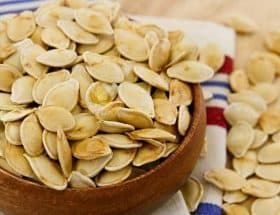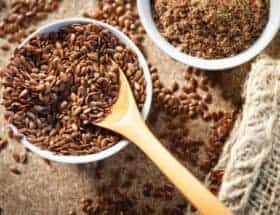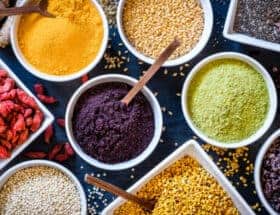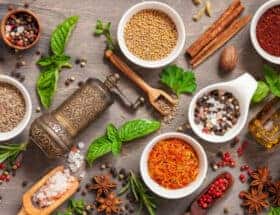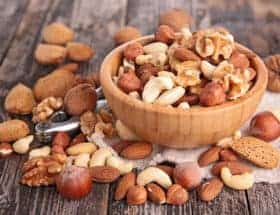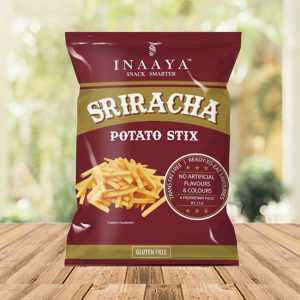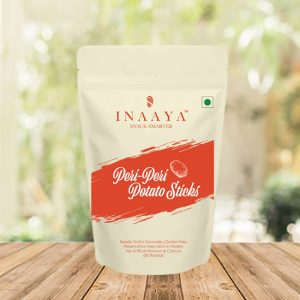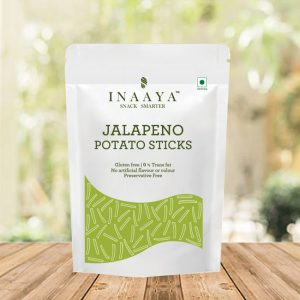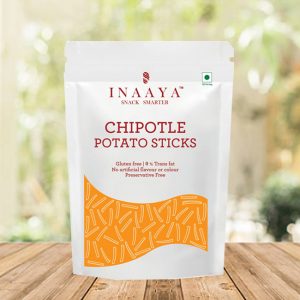Have you ever thought why ‘Til ke Ladoos’ are the speciality of winters in India? Well, ’til’, which are the sesame seeds, have been a part of Indian cooking since ancient time and is even popular today for the sole reason of the power packed benefits it holds. Sesame seeds are regarded as superfood items, which means there is a long list of sesame seeds uses and sesame seeds benefits. But, have you ever thought what these seeds actually are and where do they come from? This article takes a step back and fills your memory with some interesting knowledge about sesame seeds which would for sure leave your jaws dropped on the floor.
Introduction: Sesame seeds are the oldest edible oil seeds, usually flat and oval in shape. These fatty seeds are cultivated from the pods of the flowers grown on annual herb plants. Sesame seeds are mainly grown in tropical regions and are drought tolerant, hence, these seeds can grow at places where other seeds fail to nurture. Sesame seeds have a mild sweetness along with a nutty taste and crunchy texture when eaten as a whole. Sesame seeds are often roasted and toasted to enhance the aroma and make it even more flavoursome. Talking about the shelf life, these seeds can be stored for an year, provided a right temperature (55-80° F) and a cool dark place.
Origin and history: As mentioned above, sesame seeds are the oldest seeds discovered by mankind. Different explorations show that sesame seeds were firstly originated in India, around 5500 years ago. In fact, Archaeological reports suggest trading of sesame oil from Indus Valley civilization to Mesopotamia (nearly 2000 BC). Sesame seeds were also used by the Chinese people, around 5000 years ago. They usually burnt the oil to make soot and carried such usage for centuries. With the passage of time, the popularity of sesame seeds spread across countries. Egypt got involved into its cultivation around 3600 years ago followed by Turkey, which started growing and extracting sesame oil about 2700 years back.
Sesame crops require very little soil fertility and moisture for healthy growth, which makes it a ‘survivor crop’. This very trait has enabled dispersed cultivation and production of sesame seeds across globe, including United States. Hence, with time, sesame seeds became one of the most favoured and fashionable super food even today.
Types: Discussed below are 3 major types of sesame seeds commonly found in India:-
 1. Black sesame seeds:
1. Black sesame seeds:
This is very prominent among all the varieties of sesame seeds. Black sesame seeds have the highest quality of oil and flavours. These seeds are considered a rich antioxidant and thereby holds a prestigious place in Ayurveda. Rich in protein, calcium and B vitamins, black sesame seeds are majorly used for medical purposes. In India, a sizable portion of black sesame seeds are used in deserts and recipes to not only boost the nutritive value of regular food but also provide a flavoursome punch to it.

2. White sesame seeds.
The Hull of black sesame seeds are removed to bring out the inner white portion of the seeds which are popularly known as white sesame seeds. The only difference between black and white sesame seeds is the presence of hull, which brings slight change in the nutritional value and flavour of the seeds. Absence of hull, makes white sesame seeds a bit more sweet and less crunchy. Also, the nutrients, such as calcium, are reduced in white sesame seeds as compared to the black ones.
 3. Brown sesame seeds.
3. Brown sesame seeds.
These are unhulled seeds which are nuttier than white sesame seeds and hold a delicate crunch. Rustic looking brown sesame seeds are the most common variety of sesame seeds and are best used for extracting oil. These hold magnificent mineral contents such as, protein, iron, copper and magnesium. Browns sesame seeds hold super strong flavours but comparatively less than black sesame.
Sesame seeds uses:
- These seeds trigger the growth of hair and skin.
- These are included in food to reduce aging effects.
- Sesame seeds form a part of winter diets to boost energy and body heat.
- Often prescribed for strengthening bones and teeth.
- Used as a good source of immune boosting.
- Commonly used in garnishing to make the food visibly enchanting and divine.
- Sesame seed powder is included in various Indian herbs and spices.
- This is also used as mouth freshener to enhance the taste and aid digestion.
- Oil extracted from sesame seeds are popularly used for cooking and other medical purposes.
- Forms a dominant part of Indian cuisines, especially during festive seasons.
Production and trade:
- Production: The global production of sesame seeds have gradually increased over decades for the very reason that these seeds require less to nurture and offers enormous health benefits. South Asia and Africa holds the largest share of sesame seeds production. Tanzania, Myanmar, India, Nigeria and Sudan are some leading countries responsible for the global supply of sesame seeds.
- Exports: As mentioned above Sudan, India, Nigeria, Myanmar and Tanzania are dominant exporters of sesame seeds worldwide.
- Imports: Top 5 countries which make the largest import of sesame seeds include, China, Japan, Turkey, South Korea and Vietnam*The production and supply of sesame seeds alters depending on the weather conditions prevailing in the countries in that very year..
- State wise distribution of sesame seeds production in India:
India is one among the major sesame growing countries. There are varieties of sesame seeds produced in India. As per the updates and outlook of 2019-20, the highest sesame seeds producing states in India includes, Gujarat, Rajasthan, Andhra Pradesh, Madhya Pradesh, Telangana, Tamil Nadu, Uttar Pradesh and West Bengal.
Conclusion: All the valuable information mentioned above helps to sharpen the knowledge and enhance your understanding about sesame crops, sesame seeds uses and sesame seeds benefits. Reading this article would have definitely changed your impression about this super food and you would be now able to grasp the other relatable facts about sesame seeds in a more prominent way.




